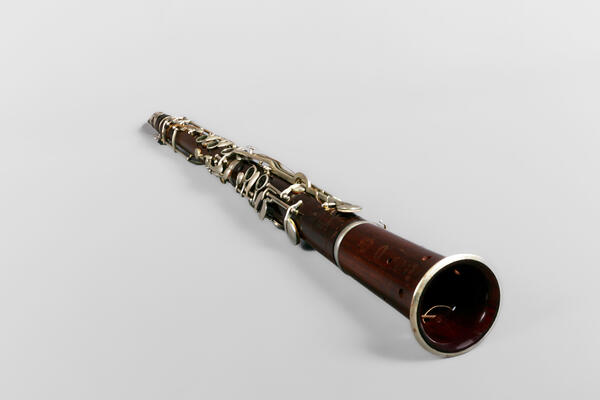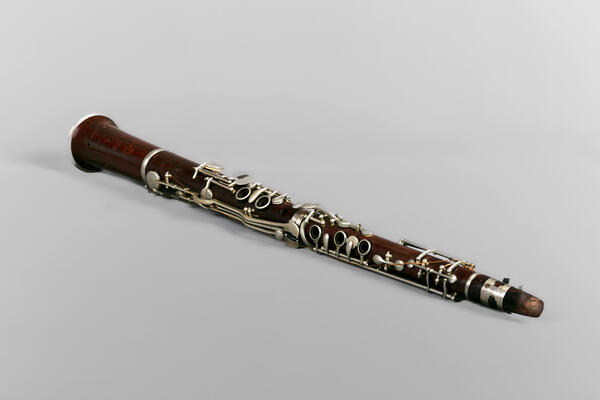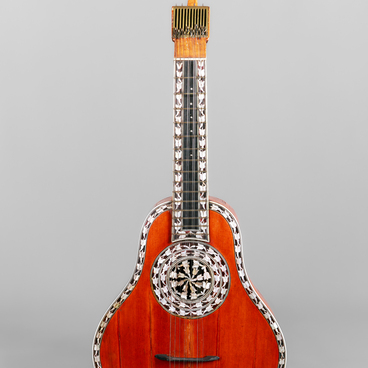In 1975, the museum received a Hungarian woodwind instrument known as the tarogato. It was manufactured by the “Stowasser” company in Budapest. The tarogato was an iconic symbol of the Hungarian War for Independence that took place between 1703 and 1711.
The instrument consists of four parts, including the upper joint, the lower joint, the flared bell, and the mouthpiece with a reed and a ligature. It has six tone holes, five of which are equipped with rings, and sixteen keys, including eleven closed and five open keys.
The tarogato has a unique sound that combines the tone qualities of the cor anglais, saxophone, clarinet, oboe, and bassoon. The instrument is very easy to play for clarinetists and saxophonists. The tarogato registers vary greatly in intensity and tone color. In the lower register, the sound is sharp and tinny, while in the upper register, it is soft and mournful.
In 1892, Vencel Jozsef Schunda, a Budapest instrument maker, created a series of new larger tarogatos. The improved instrument was equipped with a single reed instead of a double reed and started to look like a straight wooden soprano saxophone. Its sound became less sharp. Five years later, János Stowasser, the founder of the Stowasser factory where this particular tarogato was produced, also presented his modified version of the tarogato.
This wind instrument was used for soloing in Hungarian and Romanian folk music and sometimes was combined with cimbaloms or violins. In rare cases, the tarogato appeared as a solo instrument in Romani orchestras and sometimes it could be heard in symphonic orchestras.
The conductor Gustav Mahler and the orchestra of the Hungarian State Opera House used it instead of the cor anglais in the third act of the opera “Tristan and Isolde” by Richard Wagner. Johann Strauss II composed a tarogato solo in the overture to the operetta “The Gypsy Baron.”
The national conservatory in Budapest offers tarogato classes and has issued a beginner tarogato book. A summer camp in Eger, a city in northern Hungary, offers classes in clarinet, saxophone, and tarogato, organizes symposia, competitions, and concerts. This city became the home of the International Tarogato Association in the late 20th century.
The instrument consists of four parts, including the upper joint, the lower joint, the flared bell, and the mouthpiece with a reed and a ligature. It has six tone holes, five of which are equipped with rings, and sixteen keys, including eleven closed and five open keys.
The tarogato has a unique sound that combines the tone qualities of the cor anglais, saxophone, clarinet, oboe, and bassoon. The instrument is very easy to play for clarinetists and saxophonists. The tarogato registers vary greatly in intensity and tone color. In the lower register, the sound is sharp and tinny, while in the upper register, it is soft and mournful.
In 1892, Vencel Jozsef Schunda, a Budapest instrument maker, created a series of new larger tarogatos. The improved instrument was equipped with a single reed instead of a double reed and started to look like a straight wooden soprano saxophone. Its sound became less sharp. Five years later, János Stowasser, the founder of the Stowasser factory where this particular tarogato was produced, also presented his modified version of the tarogato.
This wind instrument was used for soloing in Hungarian and Romanian folk music and sometimes was combined with cimbaloms or violins. In rare cases, the tarogato appeared as a solo instrument in Romani orchestras and sometimes it could be heard in symphonic orchestras.
The conductor Gustav Mahler and the orchestra of the Hungarian State Opera House used it instead of the cor anglais in the third act of the opera “Tristan and Isolde” by Richard Wagner. Johann Strauss II composed a tarogato solo in the overture to the operetta “The Gypsy Baron.”
The national conservatory in Budapest offers tarogato classes and has issued a beginner tarogato book. A summer camp in Eger, a city in northern Hungary, offers classes in clarinet, saxophone, and tarogato, organizes symposia, competitions, and concerts. This city became the home of the International Tarogato Association in the late 20th century.





